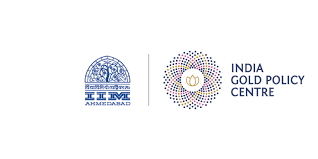
Stakeholders to submit a joint whitepaper to government
New Delhi: The Gold Industry seems to be a by-stander watching the festival buying season end. The weak consumer demand appears to have been caused by a multitude of factors such as higher imports duty, entry tax, octroi, excise duty and sales tax (VAT), overall general economic slowdown, etc. Stakeholders of domestic gold sector have been urging the government to address the issues on an urgent basis, through deliberations. In a Senior Economists Roundtable, jointly organized by India Gold Policy Centre (IGPC) and National Institute of Public Finance and Policy (NIPFP), apart from the senior economists, the domestic gold sector stakeholders including bullion banks, import agencies, star trading houses, logistics service providers; refiners of dore and scrap gold, jewellery scrap suppliers, manufacturers of jewellery and bars, wholesalers of jewellery, hallmarking and certification agencies and jewellery retailers met to share their views with economists and the government.
In a keynote address, Dr. Saurabh Garg, Joint Secretary (Investments), Department of Economic Affairs, Ministry of Finance shared the government’s point of view and mentioned that working group has been formed to review the current regulatory policies related to gold.
Prof. Arvind Sahay, Head IGPC @ IIM, Ahmedabad mentioned that, “Increase in customs duty to 10% is an issue. Not only has the increase in prices likely been a factor in reduction in consumer demand, but it has probably also caused a great deal of smuggling of gold into the country. It was, however, encouraging to note that the government appeared committed to bringing more transparency into the industry.
Also, transactions involving import of gold article from ASEAN countries under FTA agreement made under concessional duty of 0.96% may have become a threat to the gold sector as it was likely being misused by getting gold articles melted and converted into bullion bars by unscrupulous players.
In addition, if the GST is levied at 4 to 6% (with the proposed merging of all indirect taxes) and Customs Duty at 10%, the consumer will need to pay taxes to the extent of 14 to 16% on the purchase of gold. Leading gold industry associations are lobbying for GST 4 to 5% to the government. After GST kicks in, what would be the price differential of domestic gold prices over international prices? If indeed prices remain at 10% or more on the upside, this would likely affect the final price of gold to the consumer, and then this could have a further cascading impact on the industry and consumer behavior and needs policy attention. It would also lead to greater smuggling of gold.
Further, preliminary consumer research across 11 largest gold consuming states in India with a sample size of 1150 suggests that family functions and festivals are the main drivers of gold purchase; that strong sentiments are associated with jewelry in 70% of the households sampled and that more than 70% of households keep more than half their jewelry at home – and that 90% of the sample had not heard of the Gold Monetization Scheme.”
Director of IIM, Ahmedabad, Prof. Ashish Nanda noted, “Gold is an important asset, particularly in India. Policy makers and industry participants recognise the importance of having thoughtful and clear policies to appropriately regulate and nurture the industry for social benefit. India Gold Policy Center at IIMA is committed to providing impartial research based insights on gold related issues that will contribute meaningfully to the establishment and implementation of effective gold policy in India.”
In his keynote address Dr. Rathin Roy, Director, NIPFP observed that “Gold in India has been historically not just a store of value and a medium of exchange but also an investment in itself. For this reason, the treatment of gold as a resource requires unorthodox thinking and careful treatment. India’s gold policy is an integral part of our macroeconomic and fiscal toolbox”.
India imports 99% of its gold demand in the form of standard gold of 995 purity called Bullion and mined gold called Dore. India imports standard gold through few licensed institutions viz. bullion banks, nominated agencies and star trading houses. Subsequently in the value-chain, standard gold moves through about 400,000 bullion dealers to jewellery manufacturers and gets distributed through 300,000 retailers of which (13000 are BIS certified) to more about 100 crore unregistered consumers. High import duties have been conducive to smuggling of large quantity of gold through unofficial channels to circumvent payment of custom duty. High import duty is the reason for gold price variation in India vis-a-vis international markets namely Singapore, UAE, Switzerland and others levy no import duties. The import duty was imposed at a time (2013) where the CAD was under severe stress – today, the CAD is reporting a marginal surplus. Therefore, CAD cannot be a reason for continuing the gold duty.
Taxes are levied on each transaction in the entire supply chain from importing banks/agencies to consumers in multiple forms, be it customs handling charges or import tariff, excise duty, VAT or cess to the government. Import tariff is published by RBI every 15 days and importers follow the rate irrespective of the spot exchange rates. Bullion banks and importers are levied 10% import duty on standard gold of 995 purity and charge additional 1% VAT on supplying to domestic traders.
The Senior Economists Roundtable was participated by Dr. Saurabh Garg, Joint Secretary (Investments), Ministry of Finance, Prof. Arvind Sahay, Head, IGPC, Prof. Ashish Nanda, Director IIM Ahmedabad, Prof. Errol D’Souza, Dean (Faculty), IIM Ahmedabad, P.R. Somasundaram, Managing Director, India World Gold Council, Dr. Rathin Roy, Director, NIPFP, Dr. R. Kavita Rao, Professor, NIPFP, Dr. Ajit Ranade, Corp. Economic Cell, Aditya Birla Group, Girish Vanvari, Partner & Head – Tax, KPMG, Johnson Lewis, MD and Head – Sales and Trading, The Bank of Nova Scotia, Soumyakanti Ghosh, Chief Economic Advisor, State Bank of India, Surjit Bhalla, Chairman, Oxus Investments, Dr. Venkatachalam Shunmugham, Chief Ecomomist, MCX and R.K. Anand Dy. General Manager (Economist), Punjab National Bank.



